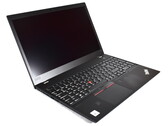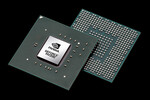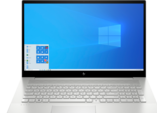
Lenovo ThinkPad T15 Gen 1 Laptop Review: Foiled by lack of AMD option
Intel Core i7-10510U | NVIDIA GeForce MX330 | 15.60" | 1.8 kg

The Nvidia GeForce MX330 is a dedicated entry-level mobile graphics card for laptops. It was released in February 2020 and is basically a renamed Geforce MX250 / GeForce MX150 / desktop GeForce GT 1030. It uses the same GP108 chip as the MX250 (GP108-655-A1 e.g.). It offers the same 384 CUDA cores as the MX250 and MX150 and also the clock speeds only increased slightly (+12 MHz Boost = 0.8% for the 25 Watt version). The dedicated GDDR5 graphics memory is connected via a 64 Bit memory bus and clocked at 3500 MHz (7000 MHz effective) leading to maximal bandwidth of 56 GB/s. Again there is a 25 Watt and slower 12 Watt (low power) variant.
In Nvidia drivers the GeForce MX330 appeared with the hardware ID 1D16.
The GP108 chip is manufactured in a 16 nm FinFET process and offers a number of new features, including support for DisplayPort 1.4 (ready), HDMI 2.0b, HDR and improved H.265 video de- and encoding (PlayReady 3.0). 4K HDR with Netflix however won't run due to the minimum 3 GB graphics memory that is required. Compared to the bigger Pascal chips, the small GP108 does not support Simultaneous Multi-Projection (SMP) for VR and G-Sync. A full list of improvements and the new Pascal desktop GPUs is available in our dedicated Pascal architecture article.
The performance of the GeForce MX330 should be identical to the MX150 and MX250 of previous years. See our GeForce MX250 page for gaming benchmarks. Nvidia states on the product page that the MX330 offers 2x of the performance of a Intel Iris Plus Graphics G7 in an i7-1065G7 (vs 2.5x of the MX350). Therefore, very demanding games like Red Dead Redemption 2 will not run smoothly, older and less demanding games like Fifa 20 or Farming Simulator 19 however should run fine in medium settings (see below for our benchmark results with different laptops). The low power version (see below) will be clearly slower however.
There is a low power version N17S-LP with a TGP of 12 Watt (up 2 Watt from 10 Watt of the LP MX250) and a "normal" 25 Watt N17S-G3. The performance of both variants should clearly differ. The low power variant offers relatively slow clock rates of 746 - 936 MHz (base - Turbo), where the 25 Watt G3 variant is clocked at 1531 - 1594 (similar to the MX250 and +70% boost clock versus the LP variant).
GeForce MX300 Series
| ||||||||||
| Codename | N17S-LP / N17S-G3 | |||||||||
| Architecture | Pascal | |||||||||
| Pipelines | 384 - unified | |||||||||
| TMUs | 32 | |||||||||
| ROPs | 16 | |||||||||
| Core Speed | 1531 - 1594 (Boost) MHz | |||||||||
| Memory Speed | 7000 effective = 1752 MHz | |||||||||
| Memory Bus Width | 64 Bit | |||||||||
| Memory Type | GDDR5 | |||||||||
| Shared Memory | no | |||||||||
| Memory Bandwidth | 56.1 GB/s | |||||||||
| API | DirectX 12_1, OpenGL 4.6 | |||||||||
| Power Consumption | 25 Watt (12 - 25 Watt TGP) | |||||||||
| technology | 14 nm | |||||||||
| PCIe | 3.0 | |||||||||
| Displays | HDMI 2.0b, DisplayPort 1.4 | |||||||||
| Features | Vulkan 1.1, OpenGL 4.6, OpenCL 1.2, GPU Boost 3.0, Multi Monitor, Optimus, GameWorks | |||||||||
| Date of Announcement | 20.02.2020 | |||||||||
| Link to Manufacturer Page | www.nvidia.com | |||||||||
The following benchmarks stem from our benchmarks of review laptops. The performance depends on the used graphics memory, clock rate, processor, system settings, drivers, and operating systems. So the results don't have to be representative for all laptops with this GPU. For detailed information on the benchmark results, click on the fps number.













































For more games that might be playable and a list of all games and graphics cards visit our Gaming List



Acer Chromebook Spin 713 CP713-3W-5102: Intel Core i5-1135G7, 13.50", 1.4 kg
External Review » Acer Chromebook Spin 713 CP713-3W-5102
Acer Enduro Urban N3 EUN314-51WG-74PB: Intel Core i7-1165G7, 14.00", 1.9 kg
External Review » Acer Enduro Urban N3 EUN314-51WG-74PB
Dell Vostro 14 3401, i7-1165G7: Intel Core i7-1165G7, 14.00", 1.6 kg
External Review » Dell Vostro 14 3401, i7-1165G7
Asus ExpertBook B1 B1500C, i5-1135G7 MX330: Intel Core i5-1135G7, 15.60", 1.7 kg
External Review » Asus ExpertBook B1 B1500C, i5-1135G7 MX330
Asus ExpertBook B1 B1400C, 1165G7 MX330: Intel Core i7-1165G7, 14.00", 1.5 kg
External Review » Asus ExpertBook B1 B1400C, 1165G7 MX330
Asus ExpertBook B1 B1500C, i7-1165G7 MX330: Intel Core i7-1165G7, 15.60", 1.7 kg
External Review » Asus ExpertBook B1500C, i7-1165G7 MX330
Asus VivoBook X515EP, i5-1135G7 MX330: Intel Core i5-1135G7, 15.60", 1.8 kg
External Review » Asus VivoBook X515EP, i5-1135G7 MX330
Asus Vivobook 15 K513EP-EJ104T: Intel Core i7-1165G7, 15.60", 1.8 kg
External Review » Asus Vivobook 15 K513EP-EJ104T
Asus VivoBook 15 S512JP-EJ015: Intel Core i5-1035G1, 15.60", 1.8 kg
External Review » Asus VivoBook 15 S512JP-EJ015
Asus VivoBook Ultra 14 K413JP-EK070T: Intel Core i5-1035G1, 14.00", 1.4 kg
External Review » Asus VivoBook Ultra 14 K413JP-EK070T
HP Envy 17-cg0033nf : Intel Core i7-1065G7, 17.30", 2.8 kg
External Review » HP Envy 17-cg0033nf
Dell Inspiron 14 5406, i5-1135G7 MX330: Intel Core i5-1135G7, 14.00", 1.7 kg
External Review » Dell Inspiron 14 5406, i5-1135G7 MX330
Dell Vostro 15 5501: Intel Core i5-1035G1, 15.60", 1.7 kg
External Review » Dell Vostro 15 5501
Acer Aspire 3 A315-57G-59LG: Intel Core i5-1035G1, 15.60", 1.9 kg
External Review » Acer Aspire 3 A315-57G-59LG
Lenovo Yoga Slim 7i Carbon: Intel Core i7-1165G7, 13.30", 1 kg
External Review » Lenovo Yoga Slim 7i Carbon
Dell Inspiron 15 5501-FV9G2: Intel Core i5-1035G1, 15.60", 1.7 kg
External Review » Dell Inspiron 15 5501-FV9G2
Asus VivoBook 15 X512JP EJ228T: Intel Core i7-1065G7, 15.60", 1.8 kg
External Review » Asus VivoBook 15 X512JP EJ228T
Asus VivoBook Ultra 14 K413: Intel Core i5-1035G1, 14.00", 1.4 kg
External Review » Asus VivoBook Ultra 14 K413
Asus Vivobook 14 A409JP-EK502T: Intel Core i5-1035G1, 14.00", 1.6 kg
External Review » Asus Vivobook 14 A409JP-EK502T
MSI Modern 14 A10RAS-870XES: Intel Core i7-10510U, 14.00", 1.2 kg
External Review » MSI Modern 14 A10RAS-870XES
Asus VivoBook 14 A413, i5-10210U MX330: Intel Core i5-10210U, 14.00", 1.4 kg
External Review » Asus VivoBook 14 A413, i5-10210U MX330
HP Envy x360 15-ed0900ng: Intel Core i7-10510U, 15.60", 1.9 kg
External Review » HP Envy x360 15-ed0900ng
Lenovo IdeaPad Flex 5i: Intel Core i7-1065G7, 14.00"
External Review » Lenovo IdeaPad Flex 5i
Lenovo IdeaPad Flex 5 14IIL05-81X1001BGE: Intel Core i5-1035G1, 14.00", 1.5 kg
External Review » Lenovo IdeaPad Flex 5 14IIL05-81X1001BGE
HP 17-by3268ng: Intel Core i7-1065G7, 17.30", 2.4 kg
External Review » HP 17-by3268ng
MSI Modern 14 A10RAS-1049XES: Intel Core i7-10510U, 14.00", 1.2 kg
External Review » MSI Modern 14 A10RAS-1049XES
MSI Modern 15 A10RAS-089XES: Intel Core i5-10210U, 15.60", 1.6 kg
External Review » MSI Modern 15 A10RAS-089XES
HP 17-by3250ng: Intel Core i5-1035G1, 17.30", 2.4 kg
External Review » HP 17-by3250ng
HP Envy 17-cg0001ng: Intel Core i5-1035G1, 17.30", 2.7 kg
External Review » HP Envy 17-cg0001ng
HP Envy 17-cg0220ng: Intel Core i7-1065G7, 17.30", 2.7 kg
External Review » HP Envy 17-cg0220ng
MSI Modern 14 A10RAS-871XES: Intel Core i7-10510U, 14.00"
External Review » MSI Modern 14 A10RAS-871XES
Lenovo IdeaPad 3 17IML05-81WC0048GE: Intel Core i7-10510U, 17.30", 2.2 kg
External Review » Lenovo IdeaPad 3 17IML05-81WC0048GE
HP Envy 17t-cg000: Intel Core i7-1065G7, 17.30", 2.7 kg
External Review » HP Envy 17t-cg000
MSI Prestige 14 A10RC: Intel Core i7-10510U, 14.00", 1.3 kg
External Review » MSI Prestige 14 A10RC
Lenovo ThinkPad T15 Gen1-20S7S02U00: Intel Core i7-10510U, 15.60", 1.8 kg
» ThinkPad T15 review shows that Lenovo should be offering all of its ThinkPad laptop with AMD Ryzen 4000
» Comparison of GPUs
Detailed list of all laptop GPUs sorted by class and performance.
» Benchmark List
Sort and restrict laptop GPUs based on performance in synthetic benchmarks.
» Notebook Gaming List
Playable games for each graphics card and their average FPS results.
Top 10 Laptops
Multimedia, Budget Multimedia, Gaming, Budget Gaming, Lightweight Gaming, Business, Budget Office, Workstation, Subnotebooks, Ultrabooks, Chromebooks
under 300 USD/Euros, under 500 USD/Euros, 1,000 USD/Euros, for University Students, Best Displays
Top 10 Smartphones
Smartphones, Phablets, ≤6-inch, Camera Smartphones